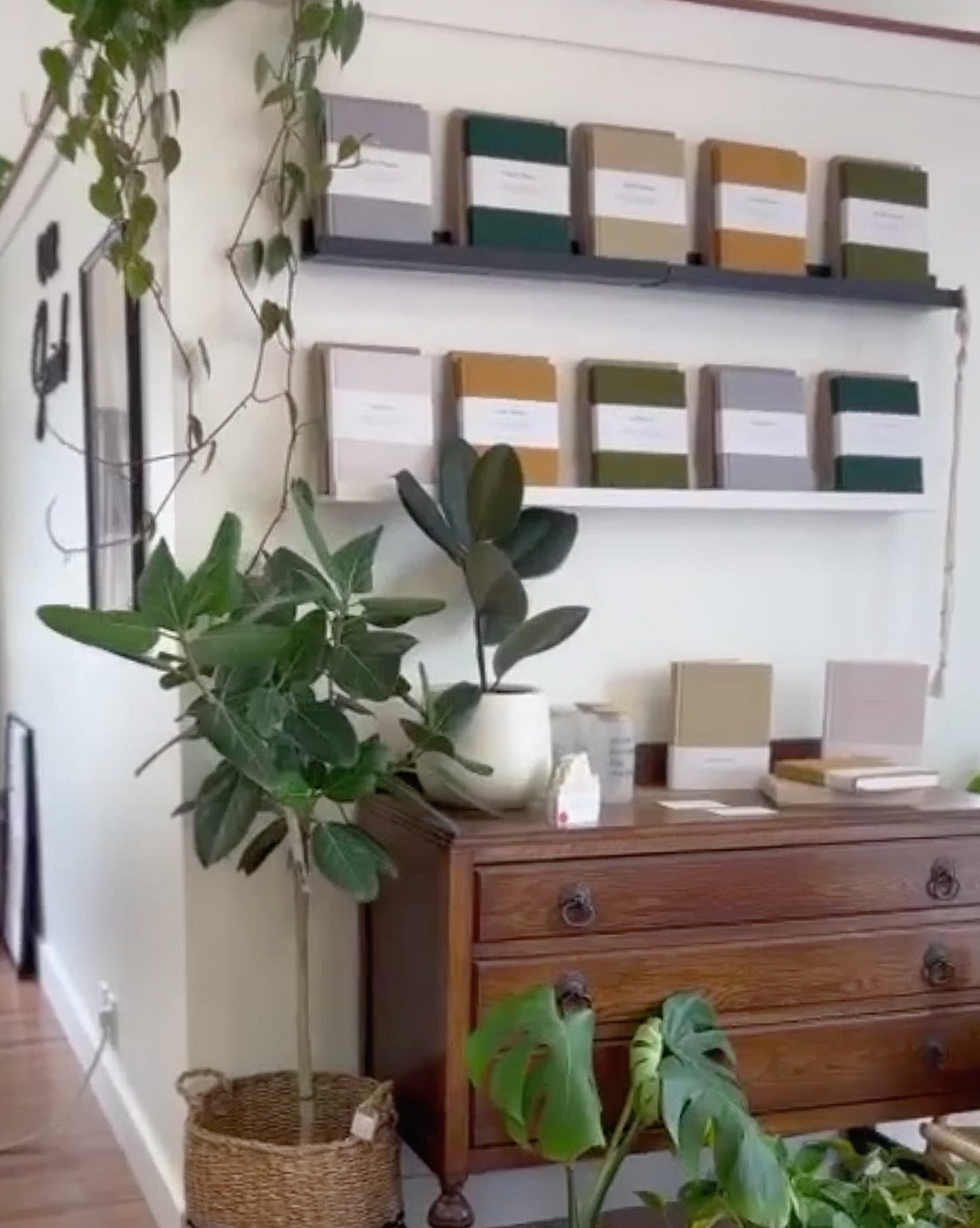Signature Planner Guide
*This page is under construction
The Hemlock & Oak Signature Planner emphasizes your personal values by connecting and regularly reviewing them with you. You will discover, connect, and review values that are meaningful and important to you. This way, you can pursue goals while focusing on the journey and values that are intrinsic to you.
What are values?
Personal values are the behaviours and traits that are important to us. When we connect with our values, our stress decreases and contentment increases. This is because we become less work-centric as a result.
In a society where work is often the centerpiece of our identity, it's easy to lose sight of our values. We know that we value things like our health, loved ones, and wellbeing. That's why this planner has integrated your values into the design. You will be able to look after yourself in a mindful and self-compassionate way.
Self-reflection (p. 7-9)
-
enjoying your morning coffee before anyone else is up (you value solitude to some degree)
-
going on a trip with friends
-
seeing someone you love that you don't get to see often
-
getting a job
-
doing your best in a difficult time
-
taking a risk that paid off
-
trying your best even when life was chaotic
-
sticking with something
-
getting out of your comfort zone
-
spending time with loved ones
-
moments of peace or rest
-
going somewhere with someone or on your own
-
being home or somewhere that you're connected to
-
doing an activity you love
-
working on a mission
-
progressing towards a goal
-
engaging in a hobby
-
moving out from somewhere
-
creating boundaries for yourself
-
letting go of something or someone toxic
-
trying something new that helped you learn something
-
doing habits that are beneficial for your wellbeing
-
a realization that changed your life
Identifying Values (p. 10-11)
-
Don't limit yourself with this question, and pay attention to the things that come up in your mind first. Any answers will still give you insight into your values later on.
-
The little things matter: try to focus on the sounds, smells, and tastes that bring you happiness as well. This will give you further insight into which moments you appreciate.
-
"They're always there for me, I can count on them for anything" (you value friendship, trustworthiness)
-
"They create amazing art." (you value creativity)
-
"They're kind to the planet and tries to make a difference." (you value justice and goodness)

Setting Goals (p. 13-17)
- Goal: Painting landscapes for a living
- Values: Creativity, independence, financial stability, challenge, self-improvement
- I want to paint landscapes to sell for a living because:
- Painting has a deep childhood connection for me
- Selling work brings me fulfillment. I'm always excited when a piece sells.
- Oil painting is meditative and peaceful
- Painting landscapes allows me to be in nature, where I feel at peace
- Milestone 1: Create a concept for an outdoor landscape collection
- Steps: Draft places I can paint, determine palette colours, and write-up a general motivation behind the collection
- Milestone 2: Paint first piece in the collection
- Steps: Determine location, save up for extra paints, make sure you have all necessary supplies for outdoor painting
- Milestone 3: Paint one piece per month
- Steps: Determine location, save up for extra paints, make sure you have all the necessary supplies for outdoor painting
- Milestone 4: Start selling
- Steps: Research local galleries, look into e-commerce platforms, research marketing practices

Habit Cultivation (p. 19-21)
Habits are necessary to achieve goals. Find habits that will support your milestones. Each month, you can use the habit challenge area to strengthen them. Finally, your timeline and review dates are important, even for the smallest of goals. Set viable deadlines for your milestones and check-in points. Make sure you log times to review your milestones and goals in your phone calendar.
Daily Framework (p. 22)
Important (p. 19)
Keep track of addresses, passwords, and other important information. These sections can alter with some labels or stickers as you desire.

Yearly Planning (p. 24-27)
These pages are your yearly overviews for the current year and next year. Use these pages to write events, keep track of birthdays, and set review dates for milestones.
Quarterly Overviews (p. 28-31)
Sometimes it's easier to track medium to long term projects by quarter instead of by month. Projects that take several months may be suited for these pages.
Holidays (p. 32)
Use this page to keep track of holidays in Canada and the United States.
Monthly Overviews
Your monthly overviews are designed to review your goals, values, and habits. It also has a section that helps you come up with self-care routines. The right-hand page is yours to use for planning and note-taking.
Calendars
Your calendar is spacious and mostly meant for your own use. There are small challenges at the bottom of each page, and a checklist on the left-hand side that can be utilized or ignored (hence the faded boxes).
The mini-calendar shows you the month ahead.
Weekly Spreads
-
meditation or a healthy habit
-
calling a loved one
-
fulfilling a certain value (i.e creativity)
-
putting work away earlier than usual
-
spending time with friends
-
eating healthy
You're probably aware that many planners, pens, and stickers are often wrapped in plastics and materials that don't do our planet any favors. These items not only clutter our homes but also contribute to larger environmental issues. It's a cycle we're determined to break.
Our aim is to craft products that align with your values and ours. We're talking recyclable, plastic-free, and sourced from renewable materials. We've got a five-year plan to become an entirely zero-waste operation, focusing on post-consumer materials that are as kind to the Earth as they are to you.
In today's fast-paced world, businesses often prioritize speed and cost over ethics, especially when sourcing products. The convenience of online suppliers can unfortunately lead to overlooking the ethics behind manufacturing. We believe there's a better way to do business.
That's why we've chosen to partner with family-owned manufacturers here in Canada. These are collaborations that allow us to have a transparent, ethical, and sustainable production line. It's the sort of mindfulness that you would expect from a friend, because respect for both people and the planet is what we're all about.
So, if your style leans toward conscientious living without sacrificing elegance, welcome. We're thrilled to have you join us on this journey toward ethical and sustainable sophistication.

Find a Store
Use this text to share information about your brand with your customers. Describe a product, share announcements, or welcome customers to your store.

Ambassador Program
The H&O Community is always growing. If you already use our products and share them on social media, get in touch to find out about our ambassador program.
"Finally found Planner Peace."
MASHABLE
